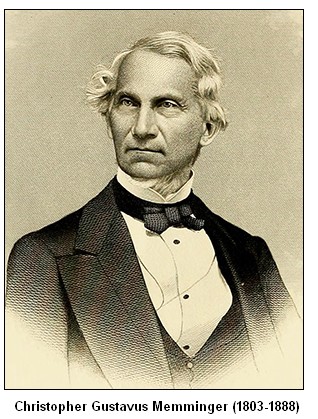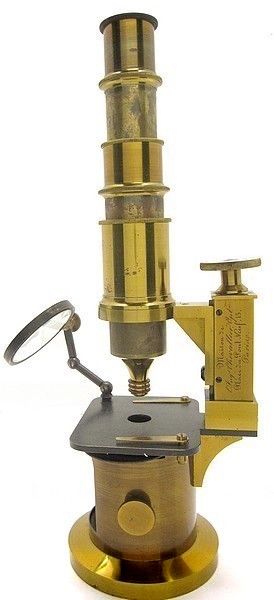
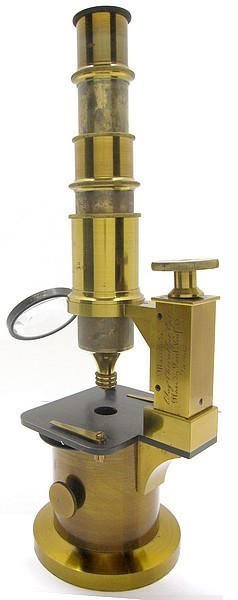

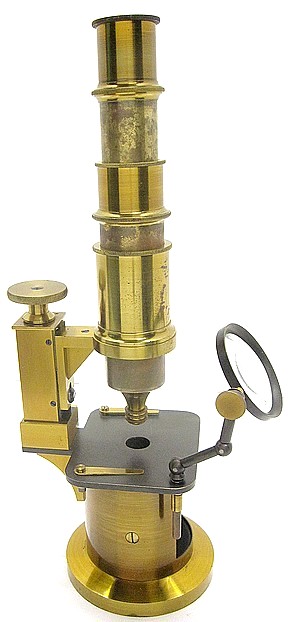
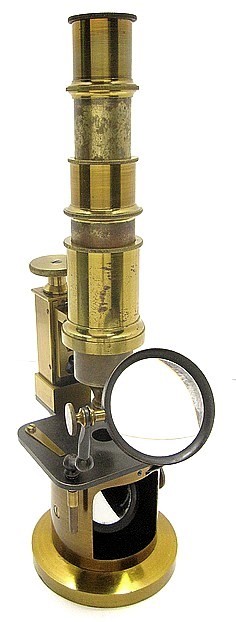
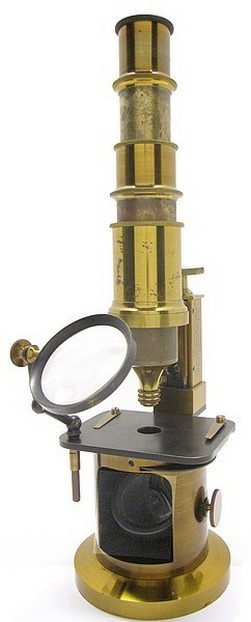
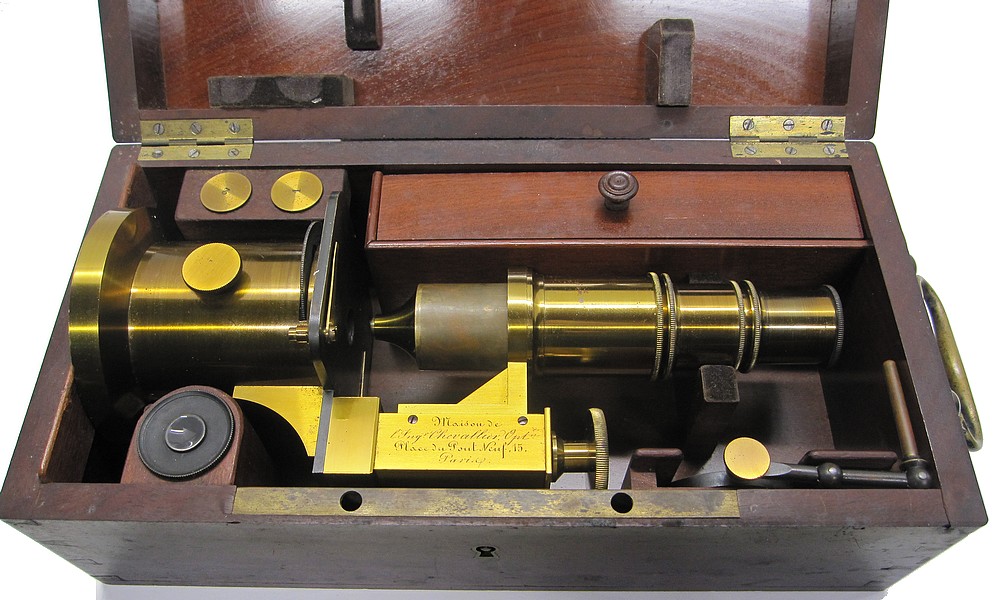
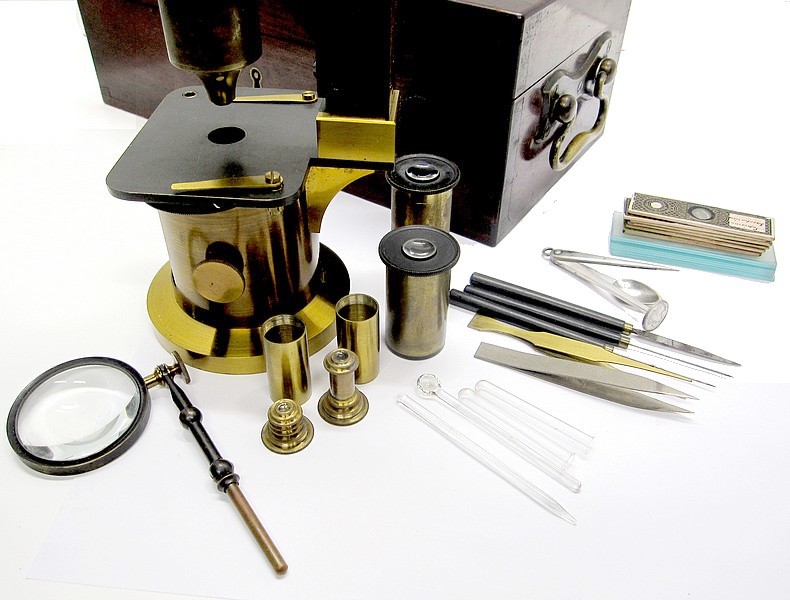
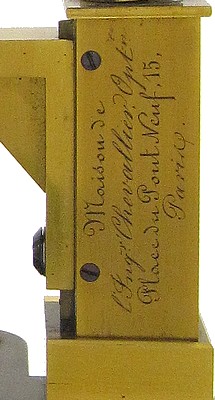
This instrument is signed “Maison de l'Ingénieur Chevallier Optn, 15 place de Pont-Neuf, Paris” It is 10¾-inches in height as shown in the images with the draw tube partially extended. The circular base is 3⅛-inches in diameter with a heavy lead insert. Main focusing is by sliding-tube. The fine focus is by micrometer screw which moves the part of the limb attached to the outer tube. The rectangular stage has two brass clips and an insert that can accommodate the stage condenser. Immediately below the stage is an aperture disc. The adjustable mirror is housed within the drum and has a concave glass. This mid-sized drum microscope is furnished with a mahogany case measuring 10½ x 5¼ x 3¾-inches having a brass handle, lock, but no key.
Among the accessories are two eyepieces, two objectives with their brass canisters numbered 1 and 2, and the stage condenser mounted on an articulated arm. Within a compartment in the case is stored a set of dissection tools, some glass implements, blank slides, and some prepared slides by Jh. Bourgogne. Oddly, also found in the case was a silver (sterling) tobacco pipe tool consisting a pick, spoon, and damper.
After studying with other Parisian opticians, Jean Gabriel Augustin Chevallier established his own workshop at 1 Quai de l’Horloge, Paris, in 1796, where he sold microscopes and other scientific instruments. In 1842, he sold his business to his son-in-law, Alexandre Victor Ducray, and daughter, Marie Louise Melanie Chevallier. After the death of J.G.A Chevallier in 1848, Ducray changed his surname to “Ducray-Chevallier". At that time, the firm traded under the name “Maison de l'Ingénieur Chevallier,” and was located at 15 place de Pont-Neuf, Paris, the address on this microscope. The exact date of this microscope is uncertain, but it surely dates after 1848 when the name of the firm changed after the death of the founder. A full detailed history of the Chevallier business is online.
An 1860 advertisment for Maison de l'Ingénieur Chevallier
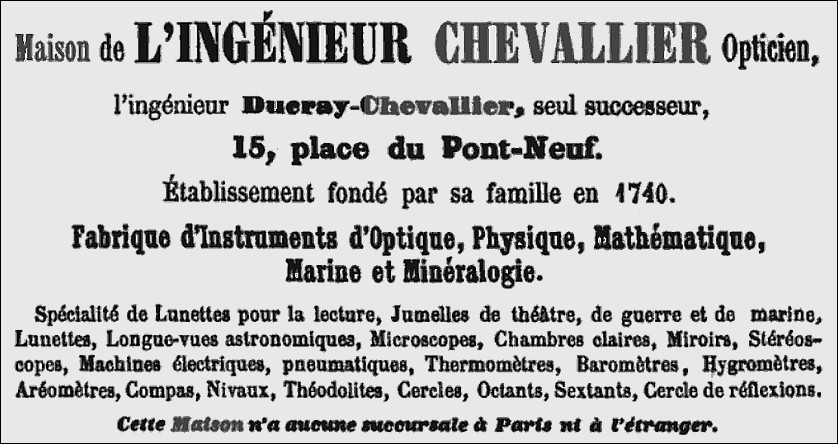
I received this microscope from a family member who is related to Frank Eugene Norment (1892-1948). He provided much of the information that follows. I was informed that the microscope belonged to Christopher Gustavus Memminger (1803-1888). He was a German-born American politician and a secessionist. He was the first Confederate States Secretary of the Treasury.
The microscope came out of a 300 acre estate in Flat Rock NC known as "Rock Hill"", which was purchased by C.G. Memminger beginning in 1844; additional land was added in later years. In 1860, C.G. Memminger built a house on the property to serve as a summer residence; that house was subsequently pulled down. His son, Edward Read Memminger (1856-1949), built a new family home on part of the property in 1890 that was called "Tranquility". It was in this house where the microscope was located. That house is still standing. The house and some of its contents later came into the possession of the Norment family. The Norment family was related to the Memmingers through the marriage of E.R. Memminger’s daughter, Marjorie Drayton Memminger. The person that sold me the microscope told me that when he was a boy he was allowed to take two items from the house when it was again up for sale. He chose a cane engraved with the name C.G. Memminger and the Chevallier microscope shown on this page.
It is evident that C.G. Memminger had an interest in science and education The following quote was taken from the introduction of the book “Pleiocene Fossils of South-Carolina”, 1857 by M. Tuomey and F. S. Holmes: “Our readers will observe that we have dedicated to the Hon. C. G. Memminger a new species of fossil pholas, P. Memmingerl. In doing so we have endeavored to show our appreciation of his love of science and learning, and grateful sense of the lively interest manifested by him for the success of this work”.
After the end of the Civil War, Memminger became a pioneer in the development of the phosphate industry in South Carolina,” In 1868, he organized the Sulfuric Acid and Superphosphate Company, later known as the Etiwan Phosphate Company.
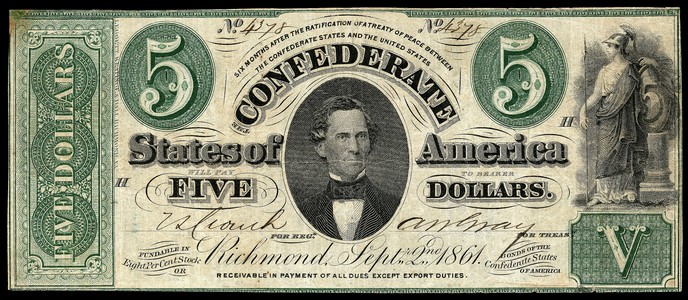
C.G. Memminger on a 5-dollar CSA banknote
